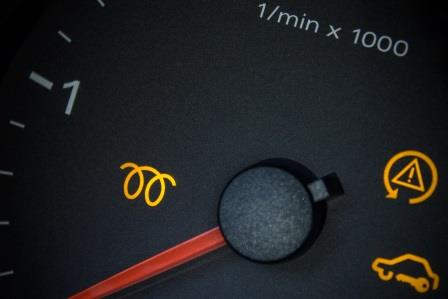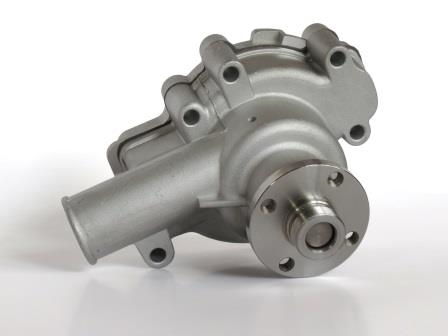-
How Motor Drivers Aid in an Automobile’s “Limp-home” Mode
How Motor Drivers Aid in an Automobile’s “Limp-home” Mode
Andrew Leverette
Have you ever had the check engine light come on while you are driving and your vehicle’s operation is limited? This can happen when there is an issue with the transmission; to protect itself, the vehicle might stay in first gear. Or it can happen when a piston is not firing, the vehicle is overheating or the tire pressure is low. Typically your vehicle will give you some indication in the dashboard, as seen in Figure 1.
 Figure 1 Cluster Vehicle Diagnostics
Figure 1 Cluster Vehicle DiagnosticsA vehicle’s limited operation after a system-level fault is called “limp-home” mode. Limp-home mode is a secondary programming feature embedded in the vehicle’s transmission and engine-management computers. These computers monitor and control hundreds of system-level features constantly. When a certain component senses a fault, the computers begin operating that component in a range safe enough to stay below the limits of the fault.
One benefit of engine and transmission systems moving toward electric motors for many actuation needs is that the electric motor can be controlled by the electric control system with more intelligence to support limp-home mode, whereas previously belt-driven actuators constantly ran off of the belt and had no fine control. A good example is the water pump, as seen in Figure 2, which is pivotal in cooling the engine. If there is damage to the electronics driving the water pump, then it is better to drive with much less torque and speed until the pump can be repaired. Obviously, the vehicle won’t be able to go as fast, but it will also not need as much coolant.
 Figure 2 Electric Water Pump
Figure 2 Electric Water PumpThe DRV8305-Q1 offers limp-home mode support by allowing on-the-fly configurability while driving a brushless DC motor. In the water-pump example, if one of the power MOSFETs driving the motor has an overcurrent situation, the DRV8305-Q1 uses flags/warnings through the serial peripheral interface (SPI) port instead of shutting down the driver so that control transfers to the microcontrollers (MCUs). Similarly, implementing slew rate/gate drive current control (IDRIVE) during motor-drive operation reduces switching losses for an overheating system; the side effect of this is reduced motor torque.
As vehicle suppliers push more towards safe and intelligent operating components, it is important for system designers to use the smartest devices. What is your experience designing with brushless DC gate drivers? Sign in and comment below.
Additional Resources
- Download the DRV8305-Q1 data sheet.
- Jump-start your system design with the TI Design “Automotive 12-V, 200-W (20-A) BLDC Motor Drive Reference Design” (TIDA-00901)
- Search all of TI’s brushless DC drivers.
IMPORTANT NOTICE AND DISCLAIMER
TI PROVIDES TECHNICAL AND RELIABILITY DATA (INCLUDING DATASHEETS), DESIGN RESOURCES (INCLUDING REFERENCE DESIGNS), APPLICATION OR OTHER DESIGN ADVICE, WEB TOOLS, SAFETY INFORMATION, AND OTHER RESOURCES “AS IS” AND WITH ALL FAULTS, AND DISCLAIMS ALL WARRANTIES, EXPRESS AND IMPLIED, INCLUDING WITHOUT LIMITATION ANY IMPLIED WARRANTIES OF MERCHANTABILITY, FITNESS FOR A PARTICULAR PURPOSE OR NON-INFRINGEMENT OF THIRD PARTY INTELLECTUAL PROPERTY RIGHTS.
These resources are intended for skilled developers designing with TI products. You are solely responsible for (1) selecting the appropriate TI products for your application, (2) designing, validating and testing your application, and (3) ensuring your application meets applicable standards, and any other safety, security, or other requirements. These resources are subject to change without notice. TI grants you permission to use these resources only for development of an application that uses the TI products described in the resource. Other reproduction and display of these resources is prohibited. No license is granted to any other TI intellectual property right or to any third party intellectual property right. TI disclaims responsibility for, and you will fully indemnify TI and its representatives against, any claims, damages, costs, losses, and liabilities arising out of your use of these resources.
TI’s products are provided subject to TI’s Terms of Sale (www.ti.com/legal/termsofsale.html) or other applicable terms available either on ti.com or provided in conjunction with such TI products. TI’s provision of these resources does not expand or otherwise alter TI’s applicable warranties or warranty disclaimers for TI products.
Mailing Address: Texas Instruments, Post Office Box 655303, Dallas, Texas 75265
Copyright © 2023, Texas Instruments Incorporated